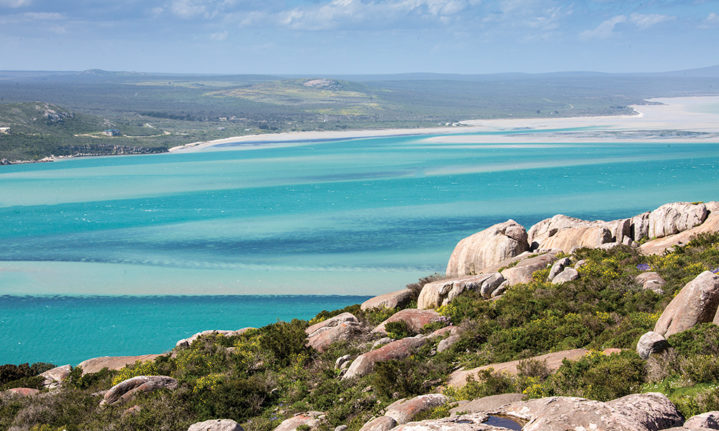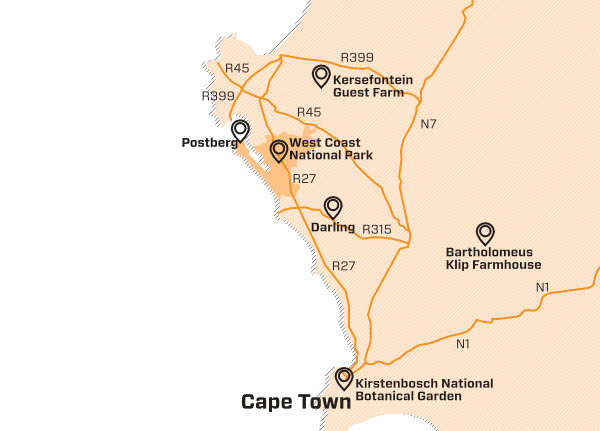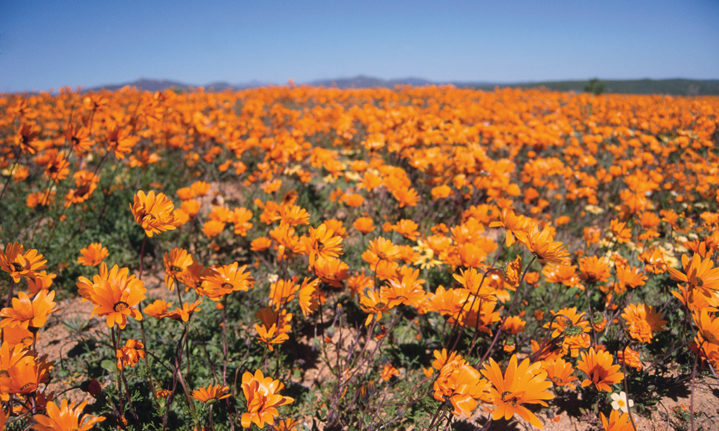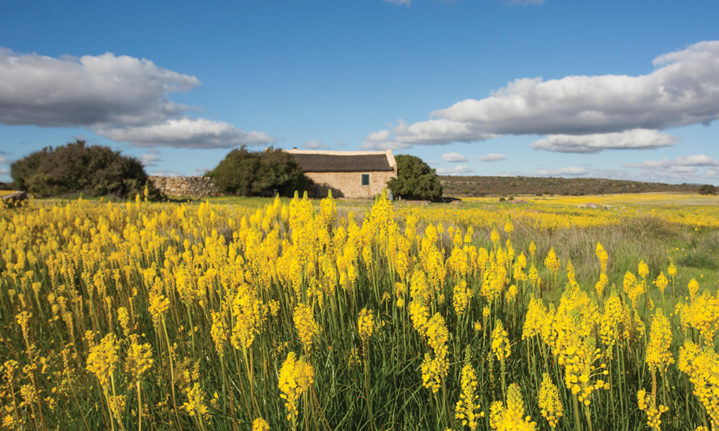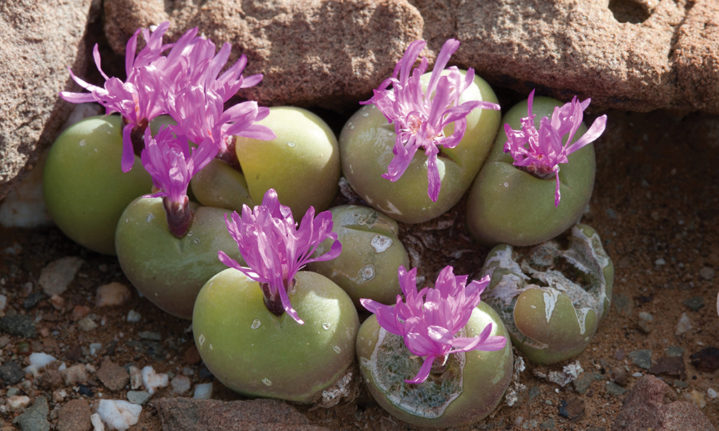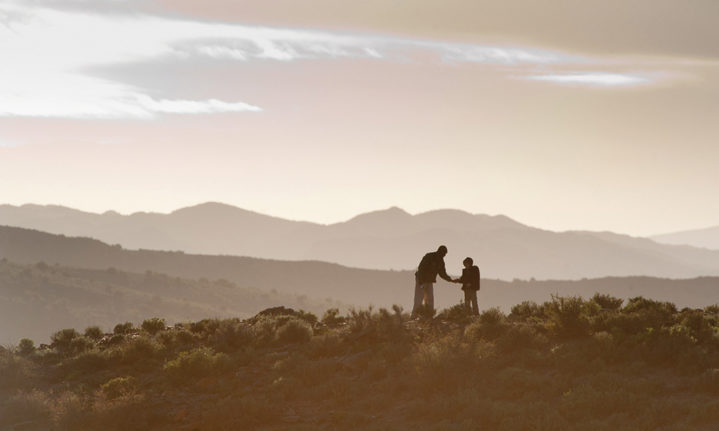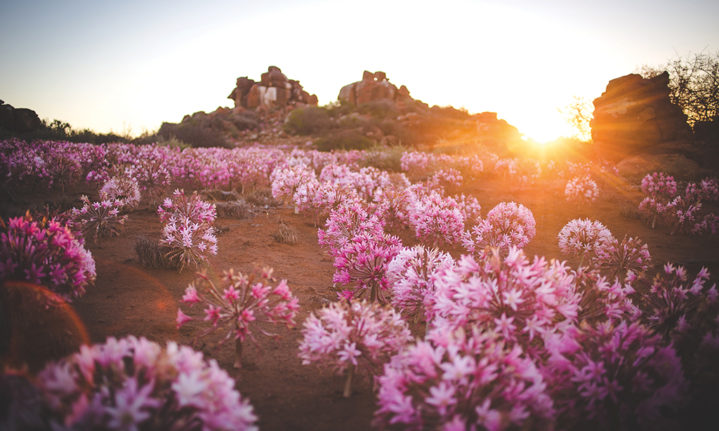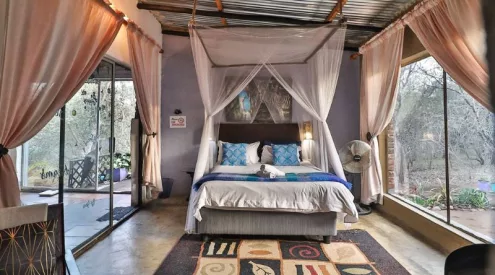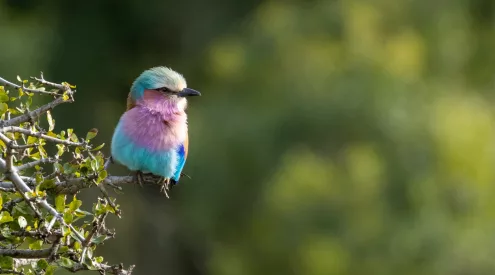The Cape Floral Region is arguably the most colourful of all the World Heritage Sites, and David Rogers takes us on a journey that blooms from the Orange River all the way to the Eastern Cape. Enjoy the show.
Photography: David Rogers, Grootbos, Gallo/Getty images

Namaqualand daisies are the poster flowers of spring, carpeting the veld in brilliant orange and drawing visitors from near and far.
In late March, precisely 21 days after the first winter rains fell in the Hantam, reports of a bountiful bloom of Brunsvigia bosmaniae beckoned me north from Cape Town to the town of Nieuwoudtville. Even from a distance, the cloaks of pink flowers could be seen fringing the edges of the dolerite koppies. Tens of thousands of flowers contrasted brightly with the granite-coloured sands and for me, it was a breathtaking sight – every bit as powerful as seeing the wildebeest migration or watching gorillas in the forests of Uganda. And amazingly, there was almost no one else there. The Brunsvigia explosion had, for some reason, gone off virtually without witnesses.
I was reminded then that the Cape is a real treasure trove of flowers – and it’s not only the spring flowers of Namaqualand that are the attractions. All the way from the Orange River to Gqeberha, the plants of the extraordinary Cape Floristic Region (CFR) and Succulent Karoo host floral events that could have you travelling most of the year. All they need is a little rain and sun and the show begins.
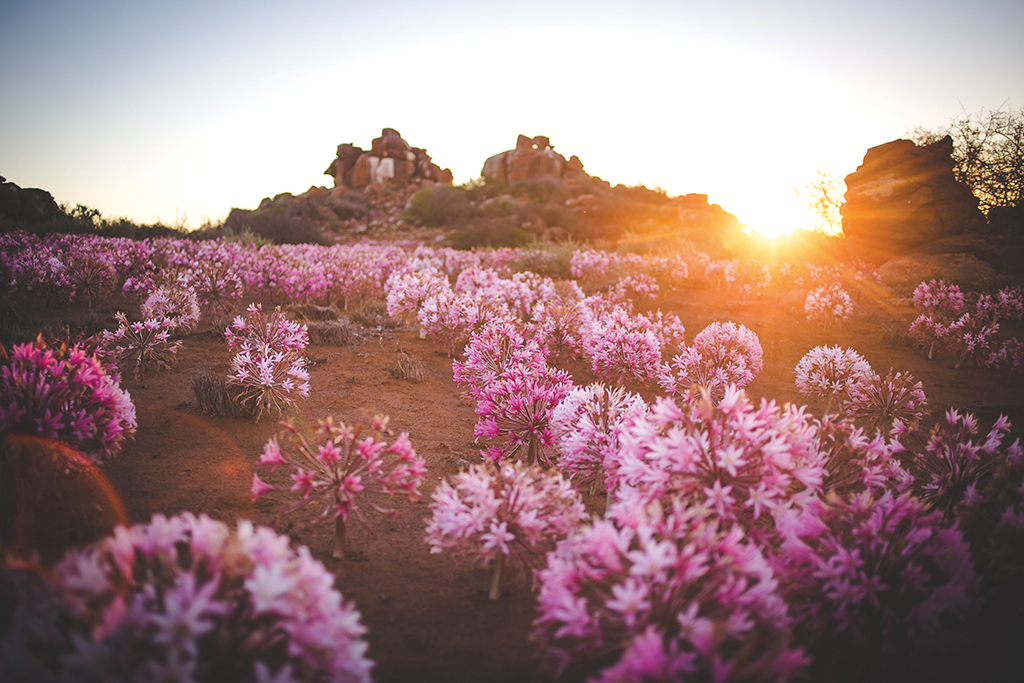
Unlike spring blossoms, Brunsvigia bosmaniae – also known as the ‘Maartlelie’ –blooms once a year near Nieuwoudtwille around March, and then only if it rains.
In 2004, the CFR was declared a World Heritage Site. It has the highest known concentration of plant species in the world. The area comprises just one percent of the total landmass of Africa but makes up 20 percent of its floral wealth with close to 9 000 species, of which more than 6 000 are endemic. An amazing 70 percent grow nowhere else on Earth. The CFR is a biodiversity hotspot for all the wrong reasons, too. Lowland Fynbos and Renosterveld are under extreme pressure from urban sprawl and agriculture, and remain two of the most threatened habitats in the world.
Core Areas
There are innumerable opportunities to explore the CFR; the core regions are the Cederberg Wilderness Area, Table Mountain, Groot Winterhoek, Boland Mountain Complex, Kirstenbosch, De Hoop Nature Reserve, Agulhas National Park and the Baviaans-kloof Mega Reserve, being managed by Cape Nature and SANParks.

A rock kestrel perches on a canopy of fynbos, no doubt on the hunt for mice that feed on seeds dispersed by proteas and restios.
Whether you’re chasing snow proteas in the Cederberg, red disas on Table Mountain or leucadendrons in the Groot Winterhoek, endemics in Kogelberg or simply looking for a flash of flowers on a fynbos trail, there is always something flowering in winter, spring and into summer.
Fynbos has more than 600 species of ericas, nearly 1 000 species of daisies and a wealth of bulbs, including iris, watsonia and babiana, and tracking them can be as exciting as following the spoor of leopards on a game trail. Leopards are, in fact, endemic to all of these areas, as are a wealth of sunbirds, sugarbirds and other avian delights.

Walker Bay as seen from Grootbos Private Nature Reserve, famous for its unique flower species.
Namaqualand the West Coast for the great spring spectacle
In August and into early September – as the rainy winters give way to warmth – an eruption of colour starting in the north and spreading southwards marks the start of the greatest show. The rules of engagement are simple. Travel from north to south to face the flowers and time your visits for when the temperature is more than 20°C. Of course, chasing flowers is a bit like following the migration and the longevity and intensity of flowering all depends on the rain, the sun, the wind and just a little luck. In some years, the fields of flowers falter but if that happens, oh well, head for the mountains, look in the crags and see what is growing there.
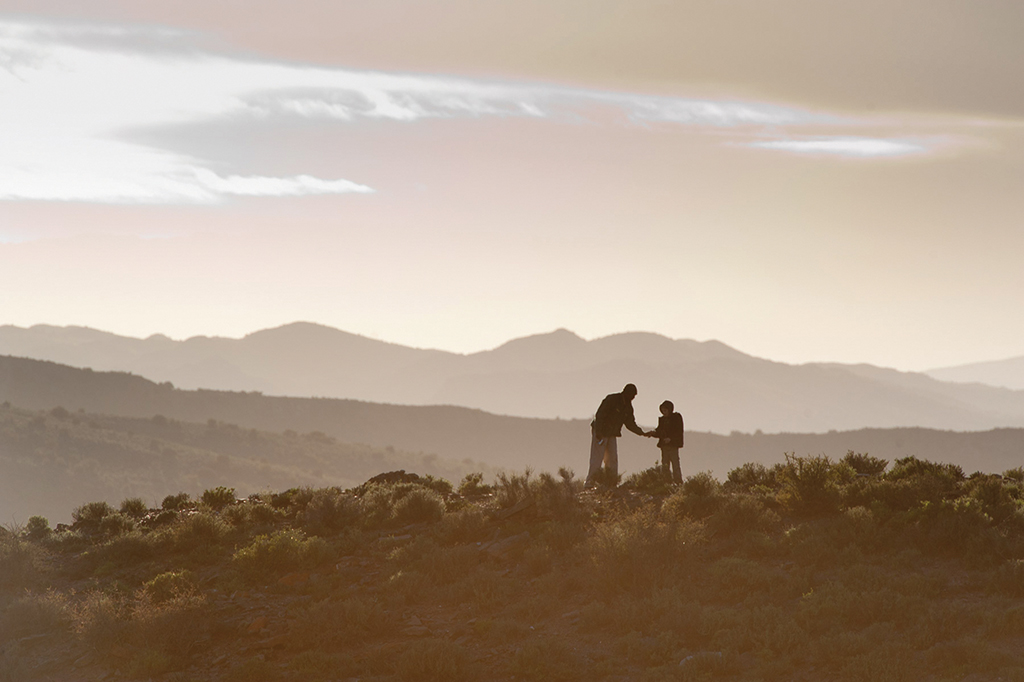
Tread lightly on a walk through Knersvlakte, where an amazing collection of dwarf succulents can be found.
The fields of colourful annuals at Skilpad Reserve, Postberg, Biedouw Valley and other flower hotspots are real eye candy but these are often disturbed fields and may be somewhat controversially seeded for effect. These flowers make up a mere eight percent of the total number of species and the real treasures are the mesembs (vygies), which number more than 1 700 species and make up 10 percent of the world’s succulents.
The Succulent Karoo
Stretching from Namibia into the Northern Cape, Western Cape and the Karoo is the Succulent Karoo, South Africa’s second global hotspot with a tally of 6 350 species, many of which are found nowhere else. Like fynbos, these plants rely on winter rainfall but they exist in dryer conditions and with more fertile soils. Many are threatened, and being so localised, a fence or mobile tower can wipe out an entire species.
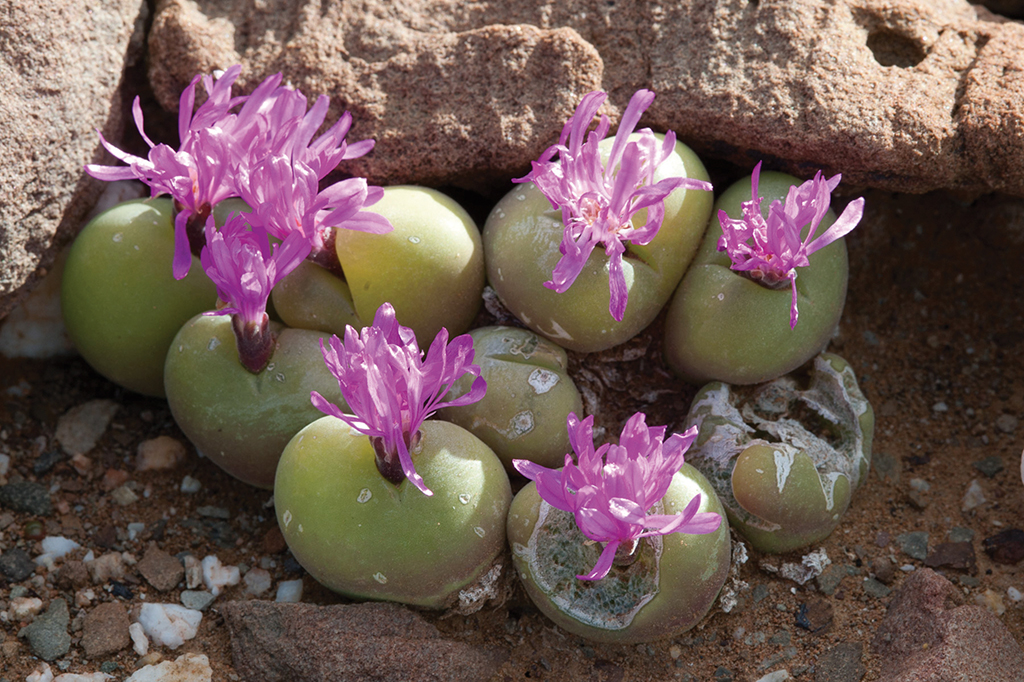
The Knersvlakte Nature Reserve, acclaimed for its white quartzite gravel, is home to 1 500 plant species, 155 of which face extinction.
As you wander near the coast – and in the mountains and plains – watch out for the tiny jewels. They are so fragile you could easily crush them underfoot. They are awesome little plants, highly tuned to survival, and are often found in the cracks of rocks where they are protected from the sun. Some, including many of the stone plants, are often associated with white quartz, a substrate that reflects light and heat and provides tolerable conditions for survival.

The beauty of nature may never wane, but the beauty of a 1960s Peugeot certainly does.
Succulents are threatened by livestock and are highly prized by illegal collectors. To thwart this trade, the whereabouts of sensitive species are guarded as closely as the rhinos.

Stay Here
The Kamieskroon Hotel, now under the management of Colla Swart’s daughter, Maryna, and Helmut Kohrs, remains a mecca for photographers. You can see some of the wonderful works that have been created there over the years on the walls. Bed and breakfast is R980 per room per night. Meals are extra.
027 672 1614, kamieskroonhotel.com
Sophia’s Guest Housein Garies has a wonderful, eclectic mix of Karoo kitsch. It is opposite the information office, which is useful for advice about flower sightings. Rates from R900 per room.
027 652 1069, sophiaguesthouse.co.za
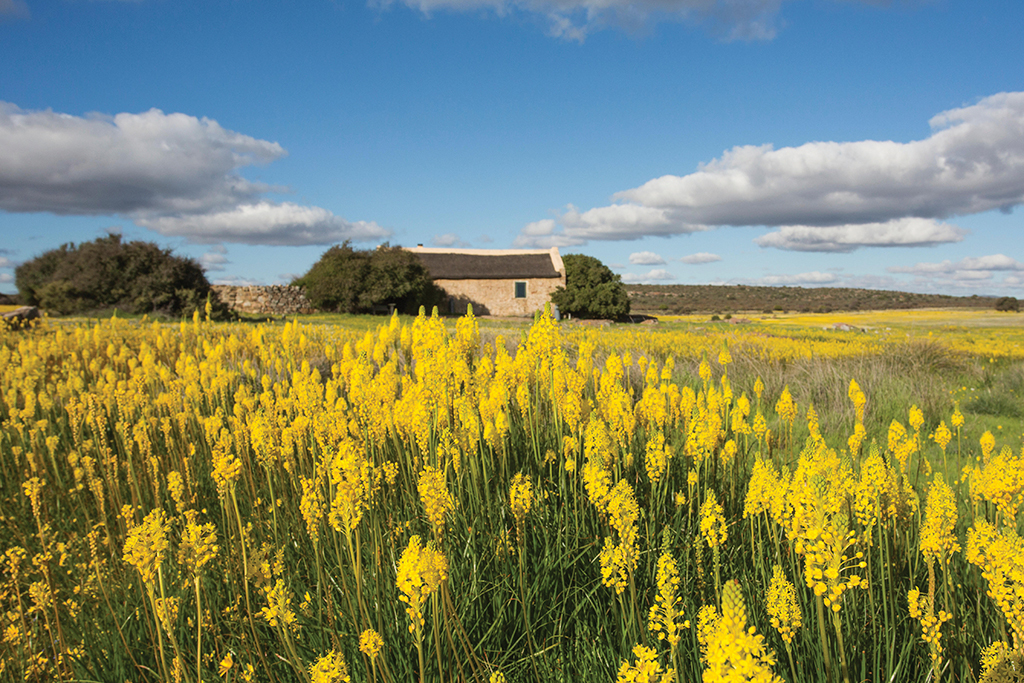
Papkuilsfontein Guest Farm
Gannabos Farm and Guest Cottage has a delightfully restored series of cottages outside Nieuwoudtville close to the Kokerboom Forest. The house is self-catering only and can sleep up to nine in three large rooms. R6 500 per night.
027 218 1249, gannabos.co.za
Papkuilsfontein Guest Farm is a gem with delicious home-cooked meals brought to your room (expect lamb and standout desserts) out of season or served in the restaurant. Rates for a cottage start at R1 590, and there is camping for R180 pp pn.
072 555 1416, papkuilsfontein.com

Chiefs Tented Camps
Mount Ceder is situated on the fringe of the Cape Floral Kingdom with breathtaking mountains on your doorstep. It has a number of self-catering cottages and a restaurant. Rates start from R551 pp pn. There is also camping for R120 pn. A real treat for photographers is to stay under the stars in Giant’s Camp for exceptional wilderness and luxury glamping.
023 317 0848, mountceder.co.za
Chiefs Tented Camps sets up luxury mobile camping in Namaqua National Park each year from 13 July to 12 September. It runs Namaqua Beach Camp on the coast near the Groen Rivier Camp and Namaqua Flower Camp at Skilpad. The rate of R5 400 per tent per night includes breakfast, afternoon tea and a three-course dinner. Picnics can be arranged.
Call Charmane 083 652 5489, chiefstentedcamps.co.za.
Getaway readers will get a 10% discount by quoting 10NAMAQUA2021.
Closer to Cape Town
West Coast flower safari could take you west from Nieuwoudtville to the white beaches on the Atlantic, the gannet colony at Lambert’s Bay, Eland’s Bay or through the Cederberg to the Biedouw Valley. Following the flowers, stopping here and there at stalls and restaurants and chatting to locals is road tripping at its very best.
But you need not go as far as Kamieskroon to find flowers. Closer to Cape Town, places such as Darling, and that special private chunk of flower-filled land in West Coast National Park called Postberg are wonderful. It’s open to the public during August and September and the contrasting scenes of flowers, white dunes, granite rocks and blue sea are simply amazing. There’s plenty of wildlife, too, including eland, red hartebeest, bontebok, kudu, gemsbok, steenbok, mountain zebra, duiker and ostrich.

Stay Here
For something special, visit Bartholomeus-klip Farmhouse on the slopes of the Elandsberg Mountains, which has extremely rare Renoster-veld. On offer are game drives and wonderful meals and hospitality at a special SADC rate of R2 600 pp pn.
022 448 1087, bartholomeusklip.com
The Cape Dutch farmstead at Kersefontein dates back to 1742 and Julian, the eighth-generation owner, will point you in the direction of the fields of flowers that grow along the Berg River. From R720 pp pn, bed and breakfast.
083 454 1025, [email protected]

When not flower spotting, enjoy beautiful views of the Langebaan Lagoon.
SANParks runs West Coast National Park, Postberg, Goegap, and Table Mountain National Park, which have a variety of accommodation options.
012 428 9111, sanparks.org
East of the Cape
By the end of September, usually after the first berg winds, the spring flowers in the Western Cape and Northern Cape start to wilt and wane and the floral extravaganza shifts eastwards toward the Southern Cape, the Garden Route and Gqeberha.
Grootbos, which has a wealth of fynbos, was one of the first private reserves in the Cape to champion flowers so famously. It is in the Overberg near
Gansbaai and if you get there before September or October, there are usually pods of southern right whales in the bay. Owned by the Lutzeyer family, Grootbos has done wonderful work promoting the flower economy in South Africa.

The 2 500ha reserve at Grootbos has a variety of trails to view mountains, ocean and flowers from a different perspective. There are 18 expertly trained horses on site, catering to different skill levels.
Further east, different sets of species start to mingle with the proteas, restios and ericas. These include aloes, spekboom and striking strelitzias. Although less well known than the CFR and the Succulent Karoo, the Eastern Cape Thicket is another fascinating biome to explore. It has its own special mix of characteristics and the habitat is associated with thick forests as well as large herbivores. Some years ago I was involved with a book written by Richard Cowling called East of the Cape: Conserving Eden, and I travelled far and wide through this area documenting its special appeal.
We have rare treasures right on our doorsteps in the Cape and whether you set off with a picnic, with a tent or to stay in a wonderful lodge, a walk in the flowers looking for a floral flash as a species draws attention to its pollinators, can be as rewarding and exciting as going after the Big Five. And the good news is that the flowers wake up late, and so you can, too.

A skunk longhorn beetle (named for the musky scent it releases when grasped) quietly surveys its domain. Insects are primary pollinators and there is a large group endemic to the fynbos biome.

Stay Here
Grootbos is having a secret season special of R3 950 pp pn, which is 55 percent off its normal rate and includes activities in the game area, meals and a special bottle of wine. There’s also 50 percent off spa treatments.
028 384 8053, grootbos.com
De Hoop Nature Reserve combines more coastal scenery and amazing floral treasures at the foot of the Potberg range with rare Cape vultures that swirl overhead. You can stay in style at Lekkerwater, which is run by Natural Selection. It is currently offering rates from R2 999 pp pn all inclusive of drinks, accommodation and activities. 021 0011 574, [email protected]
The Retreat at Groenfontein is a luxurious guest house beneath the Swartberg range that offers a great base to explore the region. Stay for three nights and the dinner, bed and breakfast rate starts from R685 pp pn. 073 026 8529, groenfontein.com
Take a drive through the Baviaanskloof, which has numerous campsites and chalets run by the Eastern Cape Parks and Tourism Agency. 043 492 0881, bookonline.ecpta.co.za
Gourikwa Reserve at the mouth of the Gourits River is a fascinating area, with amazing fields of pincushions and coastal flora. The accommodation is plentiful and starts from R920 for two adults in a fisherman’s cottage. 087 702 9126, gourikwa.co.za
Gamkaberg in the Klein Karoo is a Cape Nature self-catering resort offering accommodation from R650 pp pn. It’s a great base to explore the Cape Floral Kingdom. 087 087 8250, capenature.co.za

brilliant-hued vygie, or Mesembryanthemum, hides among the stones. Vygie means ‘small fig’ in Afrikaans and the name comes from the plant’s top-like fruiting capsule. There are more than 1 700 species of Mesembryanthemums.

My ideal route
On a flower safari, I give myself four days to explore as far as Springbok, Leliefontein and the coast. Then I return south through the Knersvlakte to Nieuwoudtville. I always visit the succulent nursery in Vanrhynsdorp, which has some fantastic succulents, including many from private collections. Nieuwoudtville has 309 species of geophytes, making it the richest hotspot for bulbs in the world, and it is always a highlight. With up to 25 000 bulbs or 50 different species of plants in a square metre of soil, it’s said a spade-full of soil will contain more than 100 bulbs.
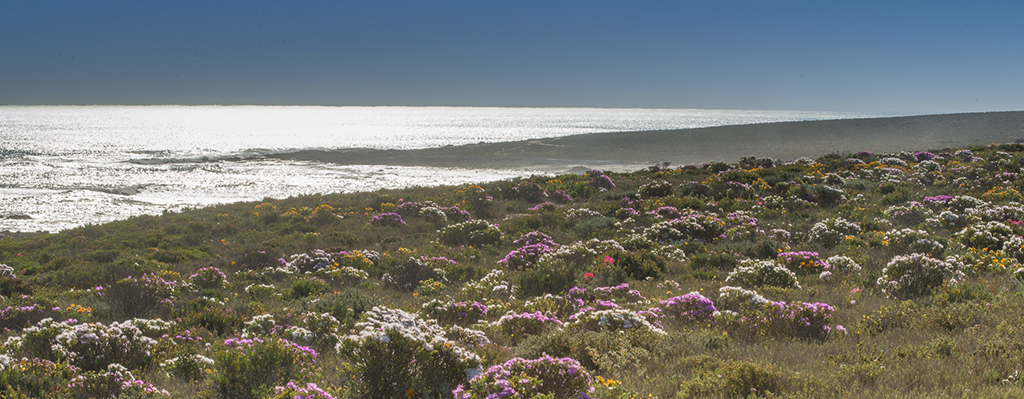
Fields of colour edge the ocean along the Cape’s usually subdued West Coast every spring, brought by the life-giving
seasonal rains.
In spring, the streets are lined with rivers of red and yellow bulbines and an amazing collage of annuals – the local church is abuzz with people talking about flowers. The fields of Papkuilsfontein and Matjiesfontein are awash with colour. But it’s on foot, among the granite koppies in Hantam Botanical Gardens, the Nieuwoudtville Flower Reserve and private farms that you will find the rarest treasures.
Photography flower tours and itineraries
David Rogers has an absorbing interest in flowers, as has his wife, Jenni Saunders, who is a botanical artist. He has written extensively on the subject for Getaway and Africa Geographic and in books. He and Jenni run a tour company specialising in interactive and photographic holidays and David leads small groups. You can find him at davidrogers.co.za









